 I learned about the Caterpillar Club when I interviewed some flying WASPs—not the kind that buzz around on tiny wings. These WASPs were airplane pilots, the first women to fly for the United States military. They served during World War II: the Women Airforce Service Pilots (or WASP, for short). The Caterpillar Club they told me about was named for silkworm caterpillars that helped save pilots’ lives. If a plane developed engine trouble in midair, pilots could float to safety by using a parachute made from silk, a lightweight cloth that silkworm caterpillars help create. These caterpillars use a spit-like substance in their mouths to spin a long silk thread that they wrap around themselves, forming a cocoon that they live in for several weeks until they become moths. Those long silk threads can then be unwound from the cocoons and woven together to make silk cloth. About twenty years before World War II, a parachute company started the Caterpillar Club for people whose lives were saved by using a parachute to escape from a disabled plane. People could write to the company about their parachute rescue, pay a membership fee, and the company would send them a little caterpillar pin. However, the WASP pilots I spoke with said that some pilots liked to feel they were part of the Caterpillar Club even if it wasn’t an aircraft’s fault that led them to use a parachute. During World War II, pilots—both men and women—trained to fly military aircraft for the Army in small open planes. The planes didn’t have a roof. If a nervous pilot-in-training forgot to buckle the seat belt and the plane tipped over, the pilot could fall out! Fortunately, they always wore a parachute. Landing safely—thanks to the parachute—not only let them feel part of the Caterpillar Club, but also helped the students remember to never, ever forget to buckle up again. However, by World War II, many parachutes used by U.S. pilots weren’t made of silk. The silk-producing areas of the world were controlled then by Japan, which the U.S. was fighting in this war. Because U.S. companies could no longer get silk cloth, they began making parachutes from a new material scientists had just invented—nylon. Most parachutes are made of nylon today. Even so, the Caterpillar Club lives on. Click here for source notes on this article. 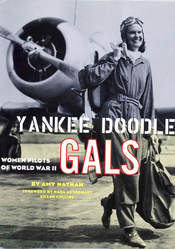 If you are interested in finding out more about the WASPs, Amy Nathan has written a book on the subject. Through firsthand accounts, she tells how these early pilots they test-flew newly repaired aircraft, dragged banners behind their planes so male trainees could practice shooting moving targets with live ammunition (!), and ferried all kinds of aircraft from factories to military bases. Yankee Doodle Gals will give you a new look at World War II and show you just how dramatically society has changed since then. Click here for more information. MLA 8 Citation
Nathan, Amy. "Caterpillars to the Rescue." Nonfiction Minute, iNK Think Tank, 20 Mar. 2018, www.nonfictionminute.org/the-nonfiction-minute/ Caterpillars-to-the-Rescue.
0 Comments
Picture this: It’s cold gray October 1918 in France, in the Argonne Forest. World War I has been going on for four hideous, deadly years. You and about 500 of your fellow Americans are smack in the middle of a MASSIVE battle. You’re running out of food and ammo. Shells are EXPLODING all around you and some of them are American! Those guys don’t know where you and your buddies are, trapped in a hillside valley, surrounded by enemy Germans! How can Major Charles Whittlesey, the commander of this lost battalion, let those other Americans know where his unit is? They’re cut off from the telegraph wires; so what, wave a flag? That’ll just draw more enemy fire! The messengers he’d sent had been shot or captured. How about homing pigeons? In this awful war, more than a 100,000 of them were used to carry battlefield messages. The major had sent all but one of his pigeons only to see them shot out of the sky. Finally, the desperate officer calls for his last one, named Cher Ami, the French words for Dear Friend. Major Whittlesey scribbles out a message: “We are along the road parallel to 276.4.Our own artillery is dropping a barrage directly on us. For heaven’s sake, stop it.” He rolls the scrap of paper, stuffs it into the tiny silver canister attached to Cher Ami’s leg, and sends him up and away. This pigeon has flown 11 successful missions— will he make it now? He must! The Germans fire. Cher Ami falls! He’s hit! But he beats and flaps his wings, gains altitude, and flies 25 miles. Despite being blinded in one eye and shot in his bloodied breast, Cher Ami delivers the critical message, still attached to his leg, dangling by a bloody tendon. And 194 American soldiers are saved by their brave dear, feathered friend. For his heroic service, Cher Ami was awarded France’s highest medal, le Croix de Guerre (the Cross of War). In the months after the war ended, on November 11, 1918, ocean liners carried Cher Ami and many thousands of other veterans to America. He continued to be treated, but in the end, his injuries were too serious. Cher Ami died on June 13, 1919. Back in the USA, Major Charles Whittlesey gave speeches about the war. He said nothing about any sorrow or awful memories, so no one knows just why he jumped off a ship to his death in the sea, late one night in November 1921. But the memory of soldiers’ heroism and of one bird’s stubborn courage will never die. 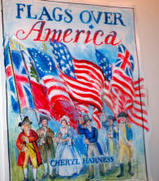 Cheryl's Latest book is Flags Over America. Click here to find out more about the book or click here to find out more about the author. MLA 8 Citation
Harness, Cheryl. "Dear Friend." Nonfiction Minute, iNK Think Tank, 8 01 2018, www.nonfictionminute.org/the-nonfiction-minute/dear-friend. 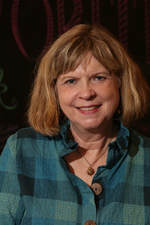 The Tomb of the Unknown Soldier in Washington D.C.’s Arlington National Cemetery is one of America’s sacred places. This marble monument is indeed a grave of a World War I soldier. It’s also a powerful symbol for Americans who fought or died in war. America chose its first unknown soldier after its victory over Germany in the Great War. It wasn’t called “World War I” until a second world war started twenty years later. The honor of making that choice went to an Army sergeant from Chicago named Edward Younger, who was stationed in France. The bodies of four unidentified soldiers were removed from their graves in four American military cemeteries near battlefields in France. Officials made sure they were American soldiers by inspecting their uniforms and checking their bodies for combat wounds. During a solemn ceremony, Sergeant Younger entered a private room where the four caskets sat side by side. He carried a bouquet of white roses. He walked around the caskets quietly and then placed the roses on one of them. The remains of that soldier were transferred to a new casket. It was sealed and draped with the American flag, so that the field of stars lay over the soldier’s head and heart. With great ceremony, the casket was honored in France and then escorted by the U.S. Navy across the Atlantic to Washington, D. C. The spray of white roses went along, as well. The Unknown Soldier lay in state in the Rotunda of the Capitol Building until November 11, 1921. That was the third anniversary of Armistice Day. “Armistice” means to lay down weapons and stop fighting. This is exactly what happened at the 11th hour of the 11th day of the 11th month in November, 1918. Today, we call our national holiday “Veteran’s Day.” Crowds gathered to watch as the Unknown Soldier’s casket was placed on a gun carriage and drawn by horses to nearby Arlington National Cemetery across the Potomac in Virginia. After a solemn burial service, many dignitaries paid their respects at the casket, including the U.S. president and the American Indian Chief Plenty Coups of the Crow Nation. The chief laid his war bonnet alongside the memorial wreaths. The casket was lowered into the tomb onto two inches of soil from France. Sergeant Younger’s spray of roses was buried with it. Later, a massive marble sarcophagus was placed on top. The words carved into the sarcophagus state simply: Here rests in honored glory an American soldier known but to God.  The Tomb of the Unknown Soldier as it appears today. The flat-faced white marble sarcophagus is relieved at the corners and along the sides by neo-classic pilasters, or columns, set into the surface. Sculpted into the east panel which faces Washington, D.C., are three Greek figures representing Peace, Victory, and Valor. The six wreaths, three sculpted on each side, represent the six major campaigns of World War I.. 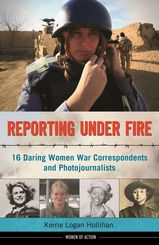 Throughout history, the wars of men have been off-limits to women; to break through these barriers, women had to fight with newspaper gatekeepers and the leaders of warring nations alike just to get the story. Kerrie Logan Hollihan's newest book, Reporting Under Fire, tells how women won the war for equality in the journalism world. To find out more about the book on Kerrie's website, click here. Kerrie Hollihan is a member of iNK's Authors on Call and is available for classroom programs through FieldTripZoom, a terrific technology that requires only a computer, wifi, and a webcam. Click here to find out more. MLA 8 Citation
Hollihan, Kerrie Logan. "America’s Unknown Soldier." Nonfiction Minute, iNK Think Tank, 1 June 2018, www.nonfictionminute.org/the-nonfiction-minute/ Americas-Unknown-Soldier. Today is a double holiday. It is Columbus Day and Indigenous Peoples' Day. Here's a wonderful story about some Native Americans. 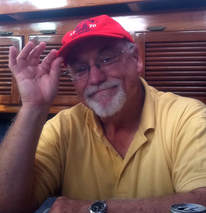  Among the fiercest foes the United States ever fought were its Native Americans. Our Indian Wars blazed over the West after the Civil War and lasted 45 years. It was a bitter struggle on both sides. The U.S. enforced a harsh peace on the warring tribes and didn’t grant Native Americans citizenship until 1924. They weren’t allowed to vote until after WW II. Native American children were often boarded in harsh schools where they were forbidden to speak their own language. But those nearly-lost languages were to save American lives. Even after shoddy treatment from the government in Washington for more than a century, American Natives quickly volunteered to defend “their country” against enemies in World War I France. A group of Choctaw Natives were hurried to the trenches to send critical messages in a language wire-tapping Germans couldn’t possibly understand. In World War II, Comanche Code Talkers waded ashore with our troops on D-Day, June 6, 1944, in Normandy. Our technically advanced enemies in Europe and the Pacific were listening to our radio messages. Mechanically coding and decoding orders could take hours when seconds meant lives. The Code Talkers’ messages in their undecipherable language were quickly delivered, and replies came back immediately. Their tongue was taught orally, never written down, and the Talkers made it even harder by using a shorthand code within a code: a tank was a “turtle,” chay da galli; a fighter plane was a “hummingbird,” da he toh hi. United States Marines in the bloody battles of the Pacific hopped from one Japanese-held island to another with Navajo Code Talkers. The Navajo tongue was even more difficult than the Comanche’s because one word could mean many things when paired with other words, and subtle pronunciation changed meaning. Neither the Comanche nor the Navajo codes were ever broken. The Code Talkers were so successful that their service was kept secret until 1968, when heroic Code Talkers could finally tell their families about their part in winning the war and saving hundreds of thousands of lives. In 2014 Chester Nez, the last of the Navajo Code Talkers, died at 93. Three years earlier he and all 29 of the original Navajo Code Talkers were awarded the Congressional Gold Medal for distinguished service to a country that finally recognized a debt to its Native Americans, and to their language. 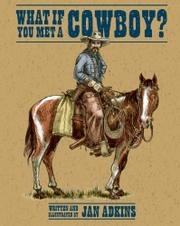 You know all about cowboys, right? They're the good guys in the white hats, carrying six-shooters and wearing fancy boots. Well, no. Cowboys weren't like that at all. Come inside with Jan Adkins and meet Jake Peavy. He's the real deal. Jake's a crackerjack cattle herder but he wears a grubby hat and he limps from when that horse fell on him. He's small, wiry, has bad teeth, and it's been a while since he washed. Come spend some time with Jake, his saddle-mates, and his fleas. You'll learn all about riding the range, roping dogies, and surviving in the down-and-dirty world that was the REAL wild West. For more information, click here. Adkins, great story-teller, is a member of Authors on Call. You can invite him to your classroom using the iNK Zoom Room. For more information look here. MLA 8 Citation
Adkins, Jan. "Code Talkers: Native Americans Come to the Rescue, But Why?" Nonfiction Minute, iNK Think Tank, 6 Mar. 2018, www.nonfictionminute.org/ the-nonfiction-minute/code-talkers-native-americans-come-to-the-rescue-but-why.  She was 15 pounds below minimum weight for the Navy when she joined, but she had a mighty mind. Admiral Grace Hopper changed the Navy. And your world. She graduated from Vassar College in math and physics then took a doctorate from Yale in math. She joined the Navy in World War II because it needed mathematicians to build the massive machines that computed tables of distance, gun elevation, projectile weight, windage and other factors for precise naval gunnery. Almost immediately she saw something other mathematicians didn’t see: computers could talk. They weren’t just number crunchers to Grace. They could do much, much more if they were given a simple language that would bring the advantages of gigantic computing power and enormous data storage to common uses. While working on the early computers she developed a “compiler,” a kind of translating machine that turned plain-language needs into a set of mathematical commands that retrieved number data from storage banks, performed thousands or millions of math operations, and provided real-world answers. In 1959 she was crucial in devising the first broad-based computer language, COBOL (COmmon Business Oriented Language). It is the root of the many computer operating systems we use today. Then-Captain Grace worked with the National Bureau of Standards to develop self-testing capabilities so a computer could “de-bug” itself. She coined this word when she extracted a fried moth disrupting one of her computers. She led the Navy away from a few giant computers to interconnected, smaller, scattered computers, opening the door to the internet. You are reading plain language words from my small computer on your web-connected small computer. Thank you, Grace. In 1985, at 79, she was promoted to rear admiral of the United States Navy Reserve. She said, “The most important thing I've accomplished, other than building the compiler, is training young people. They come to me, you know, and say, 'Do you think we can do this?' I say, ‘Try it.’ And I back 'em up. They need that. I keep track of them as they get older and I stir 'em up at intervals so they don't forget to take chances.” She died in 1992 at 85. Admiral Grace Hopper received many awards and decorations but the Navy’s most sincere tribute came in 1996 when it named the guided missile cruiser DDG-70, USS Hopper. Naturally, its sailors call their ship “Amazing Grace.” 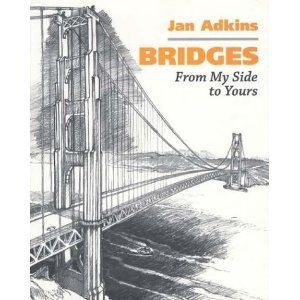 Jan Adkins successfully tackles the art and science of 10,000 years of bridge building and imparts a lot of historical drama along the way. The process is given fascinating life in this accessible study, wonderfully illustrated by Jan Adkins himself. Ranging from ancient Rome to the present day, from simple log bridges to marvels of industrial technology, and from well-known landmarks to little-known feats of engineering and art, this book gives readers a new appreciation for that most familiar of structures, the bridge. Jan Adkins is a member of iNK's Authors on Call and is available for classroom programs through Field Trip Zoom, a terrific technology that requires only a computer, wifi, and a webcam. Click here to find out more. MLA 8 Citation
Adkins, Jan. "Amazing Grace." Nonfiction Minute, iNK Think Tank, 25 Jan. 2018, www.nonfictionminute.org/the-nonfiction-minute/amazing-grace. |
*NEWS
|
For Vicki Cobb's BLOG (nonfiction book reviews, info on education, more), click here: Vicki's Blog
The NCSS-CBC Notable Social Studies Committee is pleased to inform you
that 30 People Who Changed the World has been selected for Notable Social Studies Trade Books for Young People 2018, a cooperative project of the National Council for the Social Studies (NCSS) & the Children’s Book Council
Categories
All
Abolitionists
Adams Janus
Adaptation
Adaptations
Adkins Jan
Advertising
Aerodynamics
Africa
African American History
African Americans
Africa West
Agriculture
Aircraft
Air Pilots
Air Pressure
Air Travel
Albee Sarah
Alchemy
Alligators
Allusion
American History
American Icons
Amphibians
Amundsen Roald
Anatomy
Ancient
Ancient Cultures
Anderson Marian 1897-1993
Animal Behavior
Animal Experimentation
Animal Intelligence
Animals
Animation
Antarctica
Ants
Apache Indians
Apes
April Fool's Day
Architecture
Argument
Arithmetic
Art
Art Deco
Artists
Arts
Asia
Astronauts
Astronomy
Athletes
Atomic Theory
Audubon Societies
Authors
Autobiography
Automobiles
Aviation
Awards
Bacteria
Baseball
Battuta Ibn
Bears
Beatles
Beavers
Bees
Biodegradation
Biography
Biology
Biomes
Biomimicry
Biplanes
Birds
Black Death
Black History
Blindness
Blizzards
Bombs
Bonaparte Napoleon
Boone Daniel
Botany
Brazil
Bridges
Brill Marlene Targ
Brooklyn Bridge
Brown John
Buffaloes
Building Materials
Butterflies
Caesar
Caesar Julius
Caissons
Calculus
Calendars
Cannibal
Capitals
Caravaggio
Carbon Dioxide
Carnivores
Carson Mary Kay
Cartoons & Comics
Carving (Decorative Arts)
Cascade Range
Castaldo Nancy
Castles
Castrovilla Selene
Cathedrals
Cats
Caves
Celts
Cemeteries
Chemistry
Children's Authors
Child Welfare
China
Choctaw Indians
Christmas
Chronometers
Cicadas
Cinco De Mayo
Ciphers
Circle
Citizenship
Civil Rights
Civil Rights Movements
Civil War
Civil War - US
Climate
Climate Change
Clocks And Watches
Clouds
Cobb Vicki
COBOL (Computer Language)
Code And Cipher Stories
Collard III Sneed B.
Collectors And Collecting
Color
Commerce
Communication
Competition
Compilers
Composers
Computers
Congressional Gold Medal
Consitution
Contests
Contraltos
Coolidge Calvin
Cooling
Corms
Corn
Counterfeiters
Covid-19
Crocodiles
Cryptography
Culture
Darwin Charles
Declaration Of Independence
Decomposition
Decompression Sickness
Deep-sea Animals
Deer
De Medici Catherine
Design
Detectives
Dickens Charles
Disasters
Discrimination
Diseases
Disney Walt
DNA
Dogs
Dollar
Dolphins
Douglass Frederick 1818-1895
Droughts
Dr. Suess
Dunphy Madeleine
Ear
Earth
Earthquakes
Ecology
Economics
Ecosystem
Edison Thomas A
Education
Egypt
Eiffel-gustave-18321923
Eiffel-tower
Einstein-albert
Elephants
Elk
Emancipationproclamation
Endangered Species
Endangered-species
Energy
Engineering
England
Englishlanguage-arts
Entomology
Environmental-protection
Environmental-science
Equinox
Erie-canal
Etymology
Europe
European-history
Evolution
Experiments
Explorers
Explosions
Exports
Extinction
Extinction-biology
Eye
Fairs
Fawkes-guy
Federalgovernment
Film
Fires
Fishes
Flight
Floods
Flowers
Flute
Food
Food-chains
Foodpreservation
Foodsupply
Food-supply
Football
Forceandenergy
Force-and-energy
Forensicscienceandmedicine
Forensic Science And Medicine
Fossils
Foundlings
France
Francoprussian-war
Freedom
Freedomofspeech
French-revolution
Friction
Frogs
Frontier
Frontier-and-pioneer-life
Frozenfoods
Fugitiveslaves
Fultonrobert
Galapagos-islands
Galleys
Gametheory
Gaudi-antoni-18521926
Gender
Generals
Genes
Genetics
Geography
Geology
Geometry
Geysers
Ghosts
Giraffe
Glaciers
Glaucoma
Gliders-aeronautics
Global-warming
Gods-goddesses
Gold-mines-and-mining
Government
Grant-ulysses-s
Grasshoppers
Gravity
Great-britain
Great-depression
Greece
Greek-letters
Greenberg Jan
Hair
Halloween
Handel-george-frederic
Harness Cheryl
Harrison-john-16931776
Health-wellness
Hearing
Hearing-aids
Hearst-william-randolph
Henry-iv-king-of-england
Herbivores
Hip Hop
History
History-19th-century
History-france
History-world
Hitler-adolph
Hoaxes
Holidays
Hollihan Kerrie Logan
Homestead-law
Hopper-grace
Horses
Hot Air Balloons
Hot-air-balloons
Housing
Huguenots
Human Body
Hurricanes
Ice
Icebergs
Illustration
Imagery
Imhotep
Imperialism
Indian-code-talkers
Indonesia
Industrialization
Industrial-revolution
Inquisition
Insects
Insulation
Intelligence
Interstatecommerce
Interviewing
Inventions
Inventors
Irrational-numbers
Irrigation
Islands
Jacksonandrew
Jazz
Jeffersonthomas
Jefferson-thomas
Jemisonmae
Jenkins-steve
Jet-stream
Johnsonlyndonb
Jokes
Journalism
Keeling-charles-d
Kennedyjohnf
Kenya
Kidnapping
Kingmartinlutherjr19291968
Kingmartinlutherjr19291968d6528702d6
Kings-and-rulers
Kings Queens
Kings-queens
Koala
Labor
Labor Policy
Lafayette Marie Joseph Paul Yves Roch Gilbert Du Motier Marquis De 17571834
Landscapes
Languages-and-culture
Law-enforcement
Layfayette
Levers
Levinson Cynthia
Lewis And Clark Expedition (1804-1806)
Lewis Edmonia
Liberty
Lift (Aerodynamics)
Light
Lindbergh Charles
Liszt Franz
Literary Devices
Literature
Lizards
Longitude
Louis XIV King Of France
Lumber
Lunar Calendar
Lynching
Macaws
Madison-dolley
Madison-james
Madison-james
Mammals
Maneta-norman
Maneta-norman
Marathon-greece
Marine-biology
Marine-biology
Marines
Marsupials
Martial-arts
Marx-trish
Mass
Massachusetts-maritime-academy
Mass-media
Mastodons
Mathematics
May-day
Mcclafferty-carla-killough
Mcclafferty-carla-killough
Mckinley-william
Measurement
Mechanics
Media-literacy
Media-literacy
Medicine
Memoir
Memorial-day
Metaphor
Meteorology
Mexico
Mickey-mouse
Microscopy
Middle-west
Migration
Military
Miners
Mississippi
Molasses
Monarchy
Monsters
Montgomery
Montgomery-bus-boycott-19551956
Montgomery-heather-l
Monuments
Moon
Moran-thomas
Morsecode
Morsesamuel
Moss-marissa
Moss-marissa
Motion
Motion-pictures
Mummies
Munro-roxie
Munro-roxie
Musclestrength
Museums
Music
Muslims
Mythologygreek
Nanofibers
Nanotechnology
Nathan-amy
Nathan-amy
Nationalfootballleague
Nationalparksandreserves
Nativeamericans
Native-americans
Native-americans
Naturalhistory
Naturalists
Nature
Nauticalcharts
Nauticalinstruments
Navajoindians
Navigation
Navy
Ncaafootball
Nervoussystem
Newdeal19331939
Newman-aline
Newman-aline
Newton-isaac
New-york-city
Nobelprizewinners
Nomads
Nonfictionnarrative
Nutrition
Nylon
Nymphs-insects
Oaths Of Office
Occupations
Ocean
Ocean-liners
Olympics
Omnivores
Optics
Origami
Origin
Orphans
Ottomanempire
Painters
Painting
Paleontology
Pandemic
Paper-airplanes
Parksrosa19132005
Parrots
Passiveresistance
Patent Dorothy Hinshaw
Peerreview
Penguins
Persistence
Personalnarrative
Personification
Pets
Photography
Physics
Pi
Pigeons
Pilots
Pinkertonallan
Pirates
Plague
Plains
Plainsindians
Planets
Plantbreeding
Plants
Plastics
Poaching
Poetry
Poisons
Poland
Police
Political-parties
Pollen
Pollution
Polo-marco
Populism
Portraits
Predation
Predators
Presidentialmedaloffreedom
Presidents
Prey
Prey-predators
Prey-predators
Prime-meridian
Pringle Laurence
Prohibition
Proteins
Protestandsocialmovements
Protestants
Protestsongs
Punishment
Pyramids
Questioning
Radio
Railroad
Rainforests
Rappaport-doreen
Ratio
Reading
Realism
Recipes
Recycling
Refrigerators
Reich-susanna
Religion
Renaissance
Reproduction
Reptiles
Reservoirs
Rheumatoidarthritis
Rhythm-and-blues-music
Rice
Rivers
Roaringtwenties
Roosevelteleanor
Rooseveltfranklind
Roosevelt-franklin-d
Roosevelt-theodore
Running
Russia
Safety
Sanitation
Schwartz David M
Science
Scientificmethod
Scientists
Scottrobert
Sculpture
Sculpturegardens
Sea-level
Seals
Seals-animals
Secretariesofstate
Secretservice
Seeds
Segregation
Segregationineducation
Sensessensation
September11terroristattacks2001
Seuss
Sextant
Shackletonernest
Shawneeindians
Ships
Shortstories
Silkworms
Simple-machines
Singers
Siy Alexandra
Slavery
Smuggling
Snakes
Socialchange
Social-change
Socialjustice
Social-justice
Socialstudies
Social-studies
Social-studies
Sodhouses
Solarsystem
Sound
Southeast-asia
Soybean
Space Travelers
Spain
Speech
Speed
Spiders
Spies
Spiritualssongs
Sports
Sports-history
Sports-science
Spring
Squirrels
Statue-of-liberty
STEM
Storms
Strategy
Sugar
Sumatra
Summer
Superbowl
Surgery
Survival
Swanson-jennifer
Swinburne Stephen R.
Synthetic-drugs
Taiwan
Tardigrada
Tasmania
Tasmanian Devil
Tasmanian-devil
Technology
Tecumsehshawneechief
Telegraph-wireless
Temperature
Tennis
Terrorism
Thomas Peggy
Thompson Laurie Ann
Time
Titanic
Tombs
Tortoises
Towle Sarah
Transcontinental-flights
Transportation
Travel
Trees
Trung Sisters Rebellion
Tundra
Turnips
Turtles
Typhoons
Underground Railroad
Us-environmental-protection-agency
Us History
Us-history
Ushistoryrevolution
Us History Revolution
Us-history-war-of-1812
Us Presidents
Ussupremecourtlandmarkcases
Vacations
Vaccines
Vangoghvincent
Vegetables
Venom
Vietnam
Viruses
Visual-literacy
Volcanoes
Voting-rghts
War
Warne-kate
Warren Andrea
Washington-dc
Washington George
Water
Water-currents
Wax-figures
Weapons
Weather
Weatherford Carole Boston
Whiting Jim
Wildfires
Winds
Windsor-castle
Wolves
Woman In History
Women
Women Airforce Service Pilots
Women-airforce-service-pilots
Womeninhistory
Women In History
Women-in-science
Women's History
Womens-roles-through-history
Wonder
Woodson-carter-godwin-18751950
World-war-i
World War Ii
World-war-ii
Wright Brothers
Writing
Writing-skills
Wwi
Xrays
Yellowstone-national-park
Zaunders Bo
ArchivesMarch 2021
February 2021
January 2021
December 2020
November 2020
October 2020
September 2020
June 2020
May 2020
April 2020
March 2020
February 2020
January 2020
December 2019
October 2019
September 2019
August 2019
July 2019
May 2019
April 2019
March 2019
February 2019
January 2019
December 2018
November 2018
September 2018
June 2018
May 2018
April 2018
March 2018
February 2018
January 2018
December 2017
November 2017
October 2017
September 2017
March 2017
The NONFICTION MINUTE, Authors on Call, and. the iNK Books & Media Store are divisions of iNK THINK TANK INC.
a 501 (c) (3) nonprofit corporation. To return to the iNK Think Tank landing page click the icon or the link below. :
http://inkthinktank.org/
For more information or support, contact thoughts@inkthinktank.org
For Privacy Policy, go to
Privacy Policy
© COPYRIGHT the Nonfiction Minute 2020.
ALL RIGHTS RESERVED.
This site uses cookies to personalize your experience, analyze site usage, and offer tailored promotions. www.youronlinechoices.eu
Remind me later
Archives
March 2023
February 2023
January 2023
December 2022
November 2022
October 2022
September 2022
June 2022
May 2022
April 2022
March 2022
February 2022
January 2022
December 2021
November 2021
September 2021
April 2021
March 2021
February 2021
November 2020
October 2020
September 2020
June 2020
May 2020
April 2020
March 2020
February 2020
January 2020
October 2019
August 2019
July 2019
May 2019
April 2019
December 2018
September 2018
June 2018
May 2018
March 2018
February 2018
January 2018
December 2017
November 2017
October 2017
September 2017




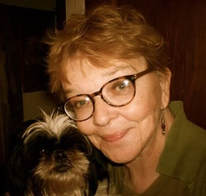

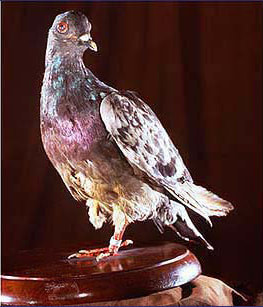
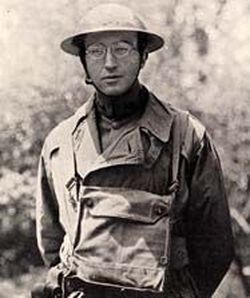
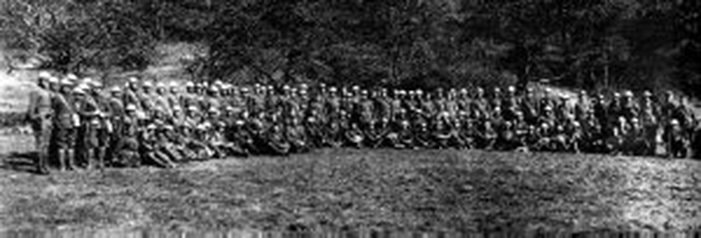


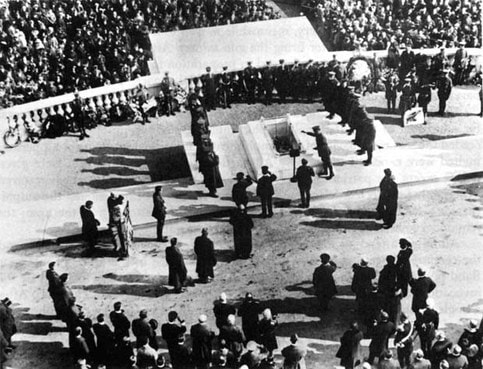


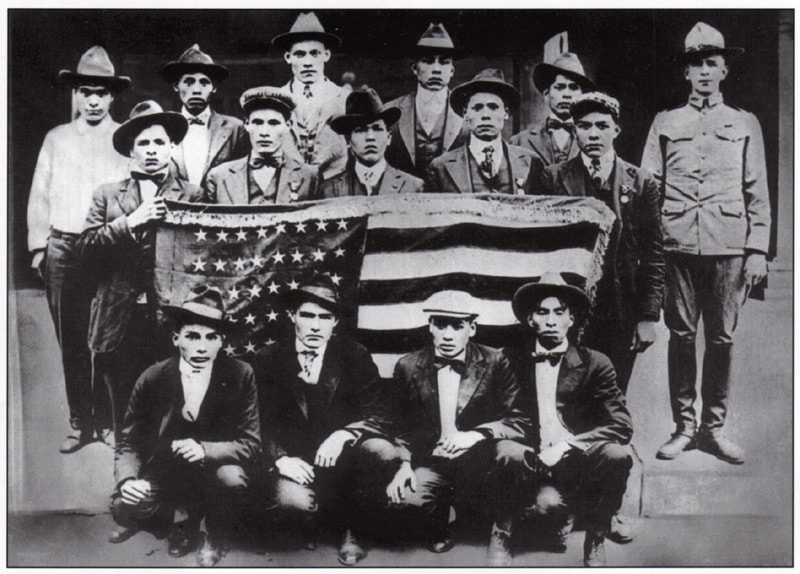
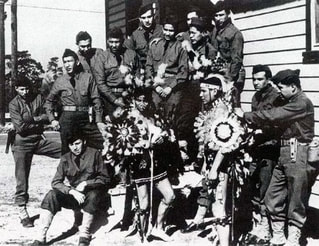
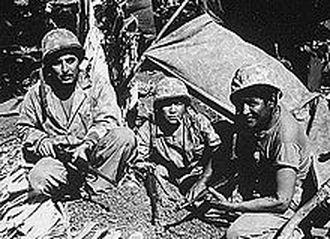
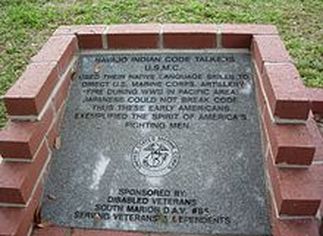
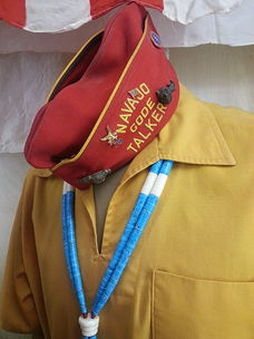


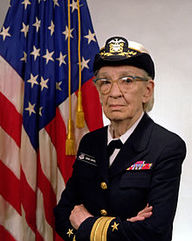




 RSS Feed
RSS Feed
